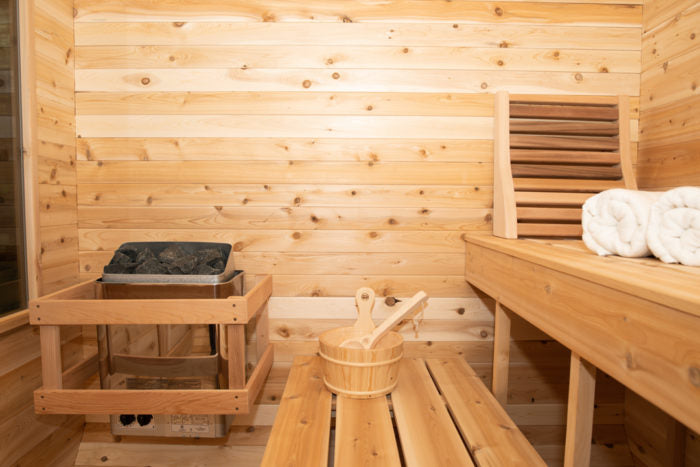Traditional Sauna Can Be Fun For Everyone
Table of ContentsTraditional Sauna Things To Know Before You BuyThe Only Guide for Traditional SaunaSome Known Details About Traditional Sauna The Ultimate Guide To Traditional SaunaGetting The Traditional Sauna To Work
A lot of the weight lost in a sauna is water loss and is re-gained upon rehydrating. Nonetheless, without a doubt sauna can be a vital part of a healthy weight loss program. To look at the distinctions in between standard and IR saunas, I will certainly separate these right into proven, theoretical, and made differences.
Therefore, the best factor in the saunawhich is at the ceiling directly above the sauna heateris typically in between 185 and 190 F. Claims that a traditional sauna goes beyond 200 F is just not true and not suitable for electric saunas marketed in the US. The temperature level for a far-infrared sauna is typically established in between 120 and 140 F; nevertheless, unlike the typical sauna, the goal in and IR room is not to accomplish a high temperature level.
As a result of this, the temperature distinction is almost irrelevant, considering that extreme sweating results in both sauna kinds, however the technique of heating the body is different. In an IR sauna the bather will feel warm and will certainly sweat a lot, however at a lot reduced temperatures (Traditional Sauna). Hence, if the objective is to spend longer amount of times in the sauna, the IR sauna is a great selection
When a conventional sauna has been correctly warmed, the sauna wall surfaces are warm, the air temperature level has actually accomplished set temperature and the rocks are incredibly warmed. As an intriguing side note, the warmed walls and the rocks are discharging far-infrared warmth, combined with the heated air, to develop an "wrapping up heat".
All about Traditional Sauna

When the high temperature level is accomplished, the components cycle on and off to keep the high temperature. The majority of typical sauna individuals delight in pouring water over the rocks to develop vapor to increase sauna humidity levels. The advantages of putting water over the rocks include: making the area extra comfortable, dampening the nasal flows, and allowing the use of aromatherapy by mixing vital oils with the water.

When the power gets in the body, it triggers the body temperature level to increase and eventually leads to perspiration. In an infrared sauna it's crucial for the emitters/heaters to continue to be on almost continuously. Because there is no mass of rocks to retain warmth, the sauna will cool if the emitters shut down.
As pointed out above, the sauna bather in an infrared area wants to position himself before operating emitters to obtain optimal gain from the warmth. The heating time for both areas go to my site can be very various, depending on exactly how the areas are used. For a conventional sauna, a bather ought to permit 30-40 mins for the room to accomplish a desired temperature level and to effectively pre-heat the rocks.
The Greatest Guide To Traditional Sauna
A well constructed sauna will normally accomplish a temperature of 150-160 F in concerning 30-40 mins. For hotter temperatures, the area might need to heat for a longer duration.

Standard saunas have a tendency to be larger (thus make use of more electrical energy) than infrared saunas, although traditional saunas are certainly readily available in one and 2 person dimensions. For a two-person traditional sauna, 5x6 or 5x7 dimension is most popular. The top bench can easily seat two or three individuals and is likewise long enough to relax throughout the sauna session.
The smart Trick of Traditional Sauna That Nobody is Talking About
The typical cost per kWH of electricity in the united state is approximately $0.11, so a 4.5 kW heating unit will set you back around $.50 to run for one hour, if the heating unit runs continuously for one hour. Usually a sauna heater will run for 75% of the initial hour and 50% of succeeding hours on because the aspects cycle once the established temperature level is achieved.

There is a rarely talked about difference in the social experience in between the 2 spaces. While our culture has lost some of the social advantage of the standard sauna experience, it can be extremely socially rewarding (Traditional Sauna). From family members time in the sauna, to heart-felt conversations with better halves, to sauna partiesthe standard sauna experience can cause intimate socializing
The Buzz on Traditional Sauna
Many greater end infrared spaces consist of tinted light therapy, sound systems and More Bonuses full-glass fronts.
Comments on “Traditional Sauna Fundamentals Explained”